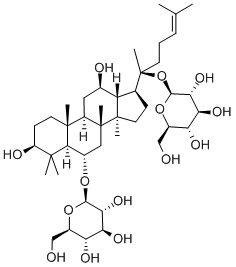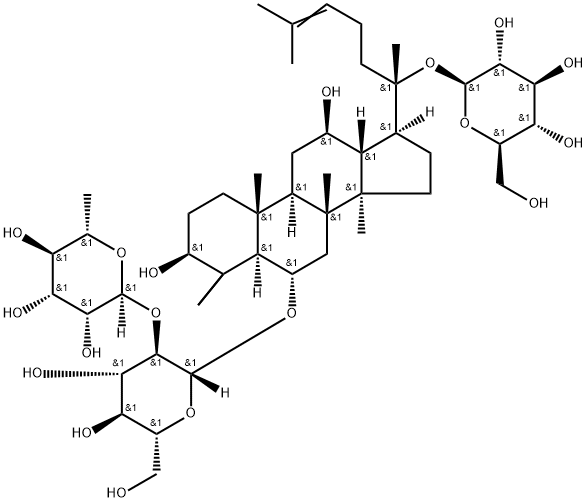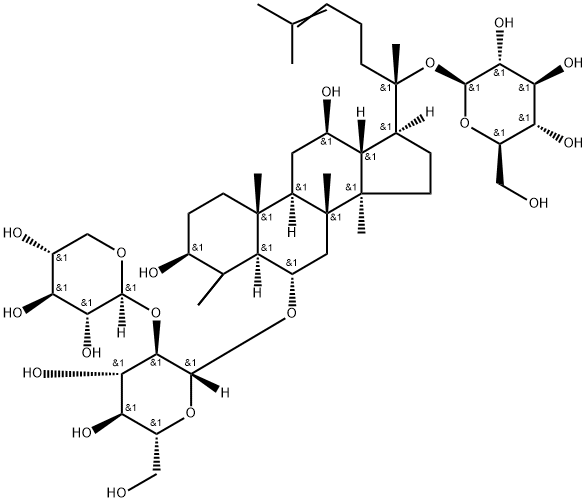
Ginsenoside Rg1 synthesis
- Product Name:Ginsenoside Rg1
- CAS Number:22427-39-0
- Molecular formula:C42H72O14
- Molecular Weight:801.01

52286-59-6
285 suppliers
$28.00/1mg

22427-39-0
349 suppliers
$9.00/5mg
Yield:-
Reaction Conditions:
with α-rhamnosidase in aq. acetate buffer at 32; for 22 h;Enzymatic reaction;
Steps:
1
Test Example 1: Analysis of saponinase [0049] Each of 50 mg of the standard Rg3 sample and 50 mg of the standard Re sample was added to 20 mM of sodium acetate buffer solution, and the saponinase of the present invention was added thereto. Then, each of the mixtures was stirred at a constant temperature of 32 °C for 22 hours. Each of the enzymatic reaction products was separated into layers by adding butanol thereto, and the butanol layer was concentrated and analyzed by HPLC. The HPLC analysis was performed under the following conditions. 1) Instrument: Shiseido nanospace SI-2 2) Column: Capcell Pak C18 UG80 4.6x150mm (5 μm) 3) Flow rate: 1.00mL/min 4) UV wavelength: 203nm 5) Column temperature: 40°C 6) Injection amount: 20μL 7) Mobile phase: Re analysis: 20% acetonitrile [0050] Rg3 analysis: concentration gradient with 40% acetonitrile and 60% acetonitrile for 40 minutes. [0051] From the test results, it could be seen that, when the standard Re was reacted with the enzyme of the present invention, Rg1 was produced, suggesting that α-rhamnosidase is present in the saponinase of the present invention. In addition, it could be seen that, when the standard Rg3 was reacted with the enzyme of the present invention, Rh2 was produced, suggesting that beta-glucosidase is present in the saponinase of the present invention (FIGS. 2 and 3).
References:
EP2570132,2013,A2 Location in patent:Paragraph 0049; 0050; 0051
![β-D-Glucopyranoside, (3β,6α,12β)-6-[(6-O-acetyl-β-D-glucopyranosyl)oxy]-3,12-dihydroxydammar-24-en-20-yl](/CAS/20210305/GIF/163403-91-6.gif)
163403-91-6
0 suppliers
inquiry

22427-39-0
349 suppliers
$9.00/5mg

80418-24-2
293 suppliers
$49.00/5mg

22427-39-0
349 suppliers
$9.00/5mg

52286-59-6
285 suppliers
$28.00/1mg

6014-42-2
68 suppliers
$40.00/25g

22427-39-0
349 suppliers
$9.00/5mg